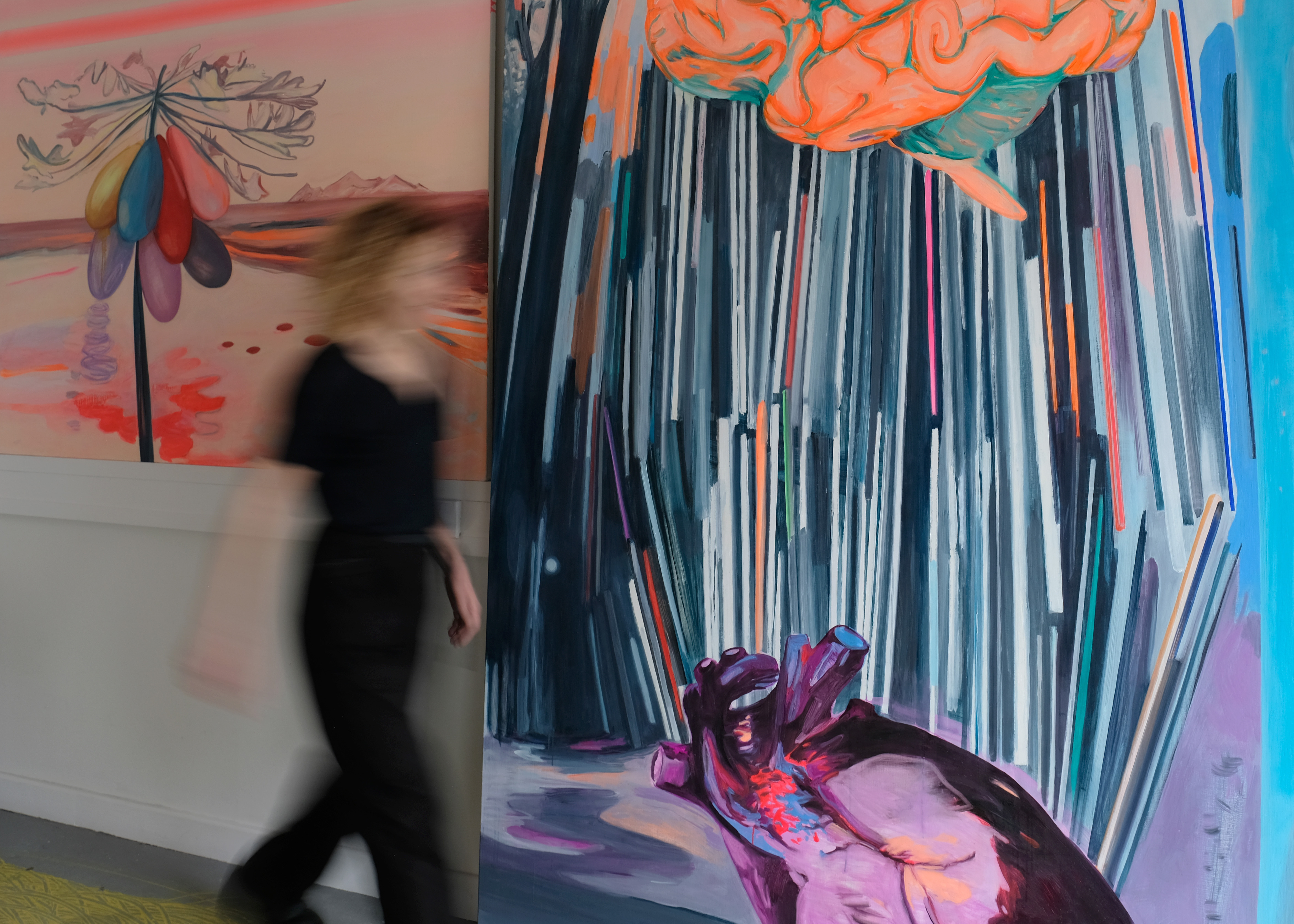I am a visual international artist of Polish origin. Since studying painting at The Ruskin School of Art, Oxford University, I have worked from my studio in Brixton. Predominantly I am a painter but also work with video, land-art, photography and sound. This flexibility allows for political and philosophical content in my art and also echoes elements of everyday life.
My painting oscillates between figurative and abstract and I am a passionate colourist. In my practice, I have turned to the old tradition of landscape painting to document the critical shift in peoples' understanding of the natural world and its resources. In my contemporary landscapes, I use neon colours to emphasise a sense of urgency at times of environmental collapse. I invent rituals and performances to re-evaluate humans' relationships with other life forms, moving beyond anthropocentric dominance. My videos express post-humanist ideas of interconnectedness and interdependence between all life forms, technologies and the environment. The subject of identity and migration are often present in my video and performative work. In my own migrant experience, the language and ones' rights are the subjects of constant negotiation.

EDUCATION:
EXHIBITIONS:
One Person Shows:
- 2024 'Just A Bad Dream', Felix & Spear, London
- 2022 'In The Beginning', Centrala, Birmingham
- 2021 '+2ºC (just under)', projection, ASC Studios, London
- 2021 'Pali się!' Punkt Odbioru Sztuki, Łódź, Poland
- 2020 'Green Thinking', light installation, ASC Studios, London
- 2020 'Grom', Polish Embassy, London, protest performance
- 2011 'Rabbits and Snow Angels', Mint Hotel, London
- 2010 'Boys and Girls', Brockwell Lido, London
- 1999 'Kroki', Między Nami, Warsaw, Poland
Group Shows:
- 2025 'Landscape Open 2025', Salisbury Museum, Salisbury
- 2025 'A Goodly Company', The Handbag Factory, London
- 2025 'Pearlescent', The Handbag Factory, London
- 2025 'Hack 8558', Bow Arts, London
- 2024 'Myślę i Czuję', Miejska Galeria Sztuki, Łódź, Poland
- 2024 'The Tipping Point', Bell House, London
- 2023 'The Bond Is Always By Scent', ASC, London
- 2022 'Naked Flames', Hilbert Raum Gallery, Berlin, Germany
- 2022 'I celebrate myself', part I, Lambeth County Court, London
- 2022 'I celebrate myself', part II, Lambeth County Court, London
- 2022 'I celebrate myself', part III, Lambeth County Court, London
- 2021 'Yesterday, Together, Tomorrow: Public and Personal Archives from Brixton', San Mei Gallery, London
- 2021 'Pacific Breeze 2', White Conduit Projects, London
- 2019 'The Salon', White Conduit Projects, London
- 2018 'Pacific Breeze', White Conduit Projects, London
- 2018 '40 Celsius', ASC Gallery, London
- 2017 'Simmering', White Conduit Projects, London
- 2017 'A Museum of Modern Nature', Wellcome Collection, London
ART COMMUNITY PROJECT:
- 2010 'Draw Each Other', Feast on the Bridge, Thames Festival, London
- 2021 'Infinity' Miejski Ośrodek Sztuki, Łódź, Poland
- 2022 Zaczernie Oasis faze 1
- 2023 Zaczernie Oasis faze 2
TALKS:
-
2024 Edgar Wind History of Art Society, Oxford University
-
2024 'The Morning Was Cloudy but Blue Skies Are Spreading'
ResearchWorks, Guildhall School of Music and Drama, London
-
2023 presentation of video work and an interview
Museum Of Contemporary Art, Warsaw, Poland